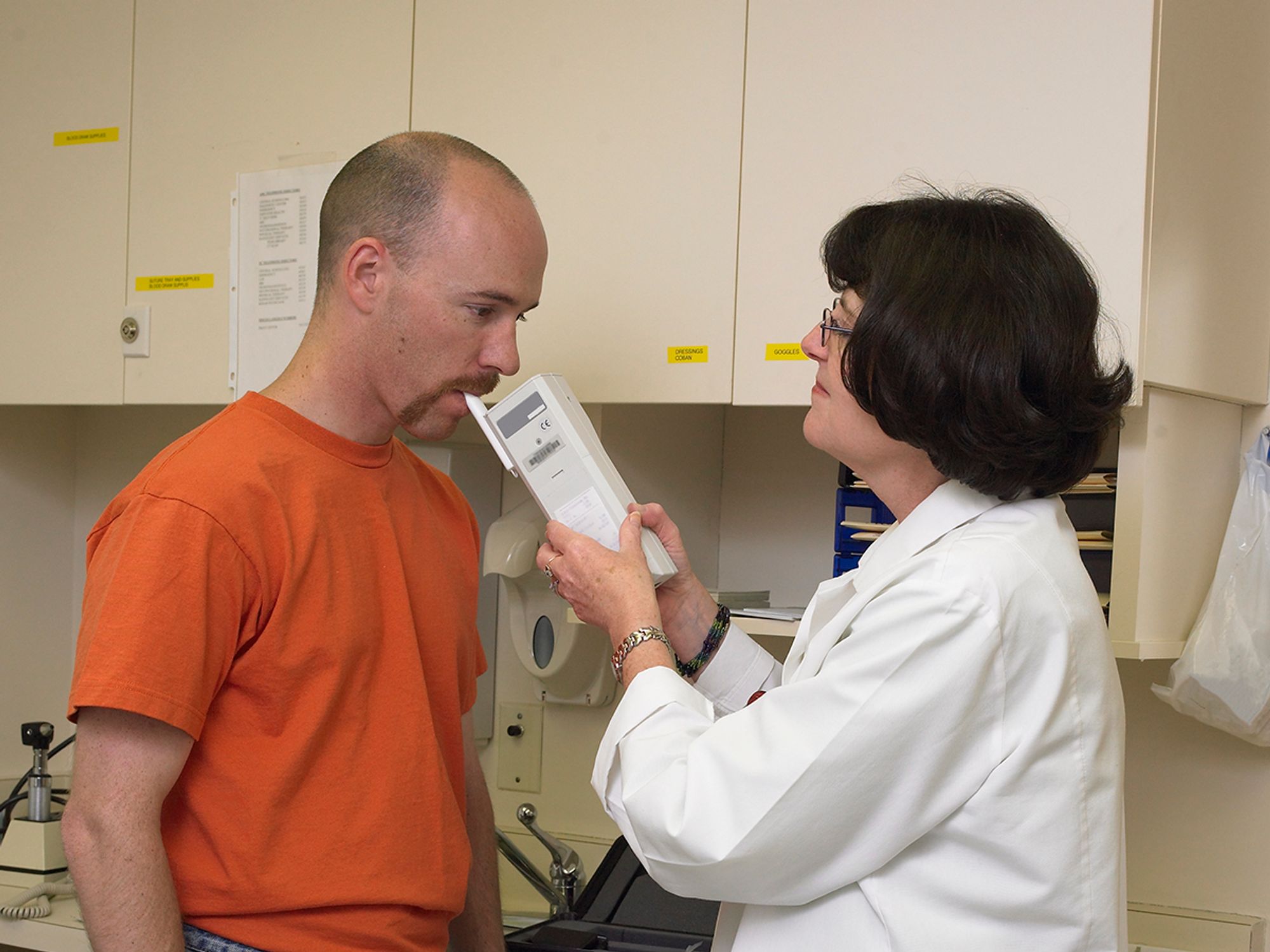InstituteEvidential breath testing device (EBT) - Motor CarrierDrug and alcohol policy - Motor CarrierFleet SafetyAlcohol testing - Motor CarrierDrug and Alcohol Testing - DOTDrug testing - Motor CarrierTransportationIn Depth (Level 3)Breath alcohol technician - Motor CarrierSubstance abuse professional (SAP) - Motor CarrierEnglishAnalysisFocus AreaUSA
Alcohol testing
['Drug and Alcohol Testing - DOT']

- Alcohol testing must be conducted and documented according to DOT regulations.
- Test results determine what actions will follow.
For alcohol testing:
- A trained breath alcohol technician (BAT) or screening test technician (STT) performs an alcohol screening test using an approved breath or saliva testing device. The test is documented on a Department of Transportation (DOT) alcohol testing form.
- If the test result is less than 0.02, the test is considered negative, required paperwork is completed, and the employer is notified.
- If the result is 0.02 or higher, the driver is directed to take a confirmation test within 30 minutes, performed by a BAT using an approved evidential breath testing (EBT) device. Paperwork is completed and the employer is notified of the result.
- Drivers with a confirmed alcohol confirmation test result of 0.02 or higher must immediately stop performing safety-sensitive functions. Those with a result of 0.02 or more but less than 0.04 may return to duty after 24 hours. Those with a result of 0.04 or higher must be referred to a substance abuse professional (SAP) for treatment. Once the treatment process is complete, drivers may return to driving after passing a return-to-duty test, and then become subject to follow-up testing.
